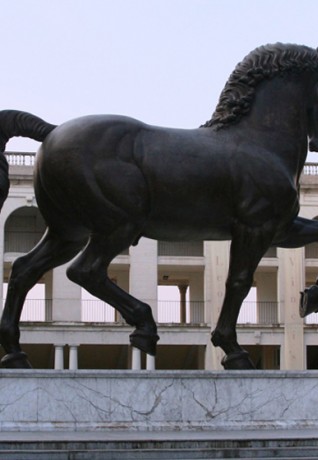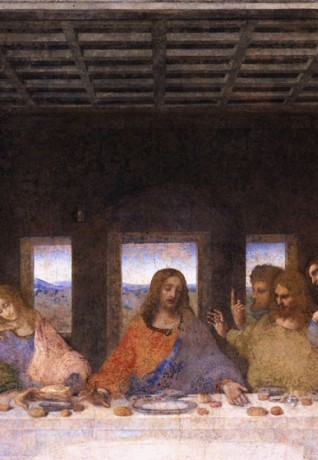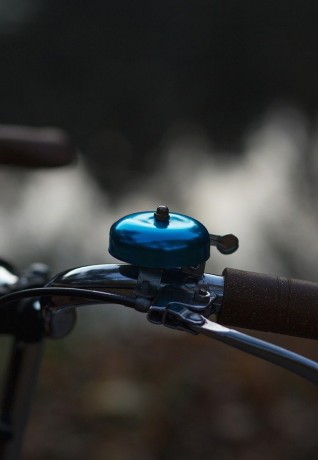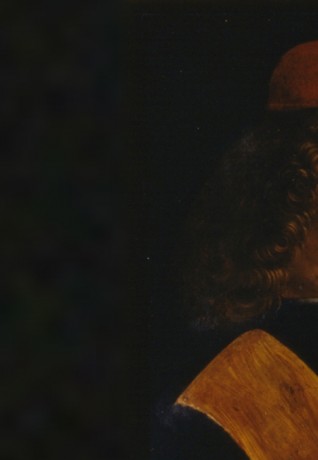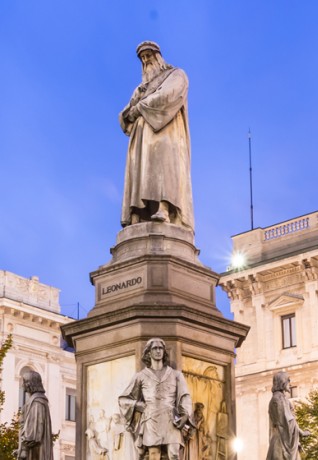Sliding doors
Conca dell’Incoronata, Navigli Milanesi

Water is life, and in Milano, Leonardo found a city of water: there were almost a dozen watercourses flowing through the city, some of them natural and others artificial. In Milano, they are called “navigli” and they are an authentic system of harbours, auxiliary canals, wharves and windmills that worked at full regime.
The country nourished the city through the waterways, sending livestock, mountain cheese and produce to Milano. Skeins of wool and silk reached the city on boats, and were shipped out as brocades and tailored garments. The cathedral building site was supplied with wood, sand, stone and blocks of marble from Lake Maggiore, and the Duomo Factory returned the favour by maintaining the waterways. Roads in the centre that we now walk on were once canals for boats, and goods from the entire region were once stored on the Navigli alzaie where people now celebrate their evenings with aperitivi.
Water was a passion that captured Leonardo as an engineer, a geologist and an artist. In the city, he drew from the creative lymph of the work-oriented Milanese mindset, which had transformed the ancient moat of the medieval walls into a circular canal system. He studied the function of the first navigation basins that regulated water levels to permit passage. He calculated the flow rate of the waters and the level of the canals, he measured distances precisely, and issued an estimate of earnings based on duties for transporting goods and the use of resources. Sitting on the banks of the Naviglio Grande, he observed and imagined the city that he dreamed of in his favourite way: by drawing it. It was impossible for the Duke of Milano to not recruit him into the staff of engineers that were working on the city canal system. This “talent pool” was charged with uniting all of the waterways to form a regional network that could be navigated without interruptions, and the dream was to reach the sea.
In his Codex Atlanticus, Leonardo sketched some of the engineering innovations: among the many drawings, there were “chiusini” set into doors, small underwater openings that could be moved by hand to allow the waters to flow more slowly and prevent passing boats from being rocked and dumping their cargo when the locks finally opened. One of the locks built at the time with this mechanism can still be seen today. The place is called Conca dell’Incoronata, and it is not far from the Brera district. This is a dry part of the Naviglio Martesana, the same waterway that runs more to the north alongside a long bicycle path, passing by farmhouses, vegetable gardens and elegant palaces. Two more examples of these tiny locks are preserved today in the Science and Technology Museum.
Speaking of water, Leonardo's drawings provide us with much more than his projects: a “water staircase” for the Vigevano windmills, a vision of Milano on different levels made cleaner and healthier by a network of water and sewer lines throughout the city, and a channel connecting Lake Como and the River Adda. There are also views of beautiful Lombardy landscapes with rivers, meadows and mountains, the same as in the background of the Virgin of the Rocks.
And even though he didn't have suitable means and materials for his engineering dreams, centuries later others would go on to build his projects in urban areas. His legacy is universally recognised. Leonardo da Vinci's name is remembered every time someone speaks of “locks”, from Venice to Panama. They are a versatile example of how Lombardy's technological excellence has been exported successfully.

 Log in
Log in

